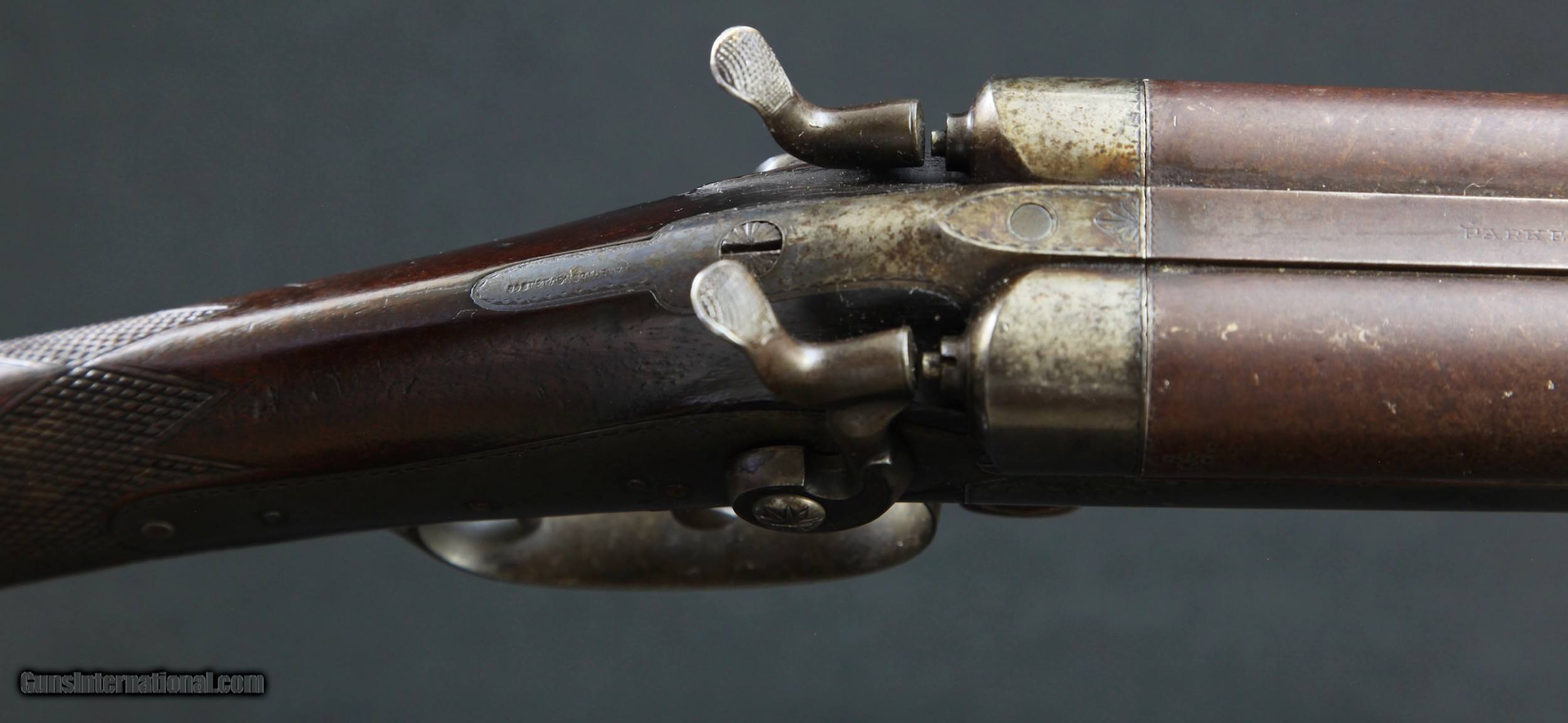
- PARKER DOUBLE BARREL SHOTGUN SERIAL NUMBER SERIAL NUMBERS
- PARKER DOUBLE BARREL SHOTGUN SERIAL NUMBER SERIAL NUMBER
It is quite likely that the business-minded Parker invested in these companies to expand his portfolio and have multiple sources of incomes in different markets. As the company expanded, it started to print catalogs of not only his plant-produced items, but also of goods that other companies in the area were selling. With a crew of 120 men, the business began to produce the machinery and steel products needed by so many new and flourishing businesses.Īs time went on, Parker was producing more than just coffee mills at the plant: lamps, tools, silverware, grain mills, and dozens of other necessities of the time were made at the factory. Success within the plant is largely due to the fact that it was the era of inventions and industrial growth. The business functioned as a machinery and foundry, and in time made numerous household and factory items. Once the business saw success, he upgraded to steam engine power to fit the growing producing demand of the plant in 1844.ġ844 was an eventful year for Parker not only because of the power upgrade, he also joined with a pair of business partners to form the company that would start his firearms career: Parker, Snow, Brooks, & Company.

It was a hard path to success with ups and downs throughout, but Parker never faltered. His brother Edmund joined him in the business in 1833 and was involved with the factory on and off for around a decade. Today, that seems like an unusual way to power a plant, but in that day and age, it was a common power source. The plant ran strictly on horse power for twelve years. In 1832, with $70.00 and a dream of what could be, he started his first coffee mill production plant. After four years of working for someone else, Parker decided it was time to be his own boss. He first started work as a button maker, and in the typical “rags-to-riches” narrative style, he was then hired by a well-known business man Patrick Lewis to make coffee mills. In his teens, he had been a farmhand to help his family make a living, and by age 18 made his way up north to Meriden, Connecticut to start making a name for himself. From a young age, Parker knew that he was destined for success. He was the eleventh of twelve children in his impoverished family. Charles Parker was born on Januin Cheshire, Connecticut. The story begins in Connecticut, the state still referred to as, “America’s Arsenal” because of its deep roots in early firearms development in the United States. The company has a long and detailed story with its roots laid well before the Civil War. One man who thought he might take a stab at the world of firearms development was Charles Parker, the founder of Parker Brothers shotguns. Simple borderlines present on triggerguard and bottom of receiver, terminating in a geometric finial.When thinking about longstanding firearm companies, one question that frequently comes to mind is, “Where did these businesses get their start?” The origin of a firearm company is usually not a simple and easy story the gun industry was, and truly still is, an extremely competitive field. Minimal decoration, consisting only of simple borderlines around locks, some simple geometric borders around breeches and small foliate finals on top of breech. German silver shield escutcheon at wrist, smooth metal buttplate.

Bottom of receiver marked: PATD MAR 23, 1875. APon the right side and TC and 3/10 on the left flat, along with the order number. Barrel flats marked with a two-line patent mark: PATD J/ PAT'D.

Barrel lug marked " 1", indicating that frame size.
PARKER DOUBLE BARREL SHOTGUN SERIAL NUMBER SERIAL NUMBER
3, 1872 on the right side and with the serial number over PAT'D.
PARKER DOUBLE BARREL SHOTGUN SERIAL NUMBER SERIAL NUMBERS
Matching serial numbers on triggerguard tang, water table, barrel lug and forend. Exposed hammer locks marked PARKER BROS, top rib marked in a single line: PARKER BROS MAKER MERIDEN CONN. Browned and color case hardened finish, checkered pistol gripped stock with checkered semi-Schnabel forend.


 0 kommentar(er)
0 kommentar(er)
